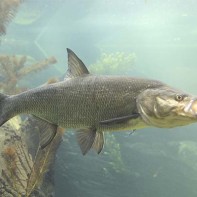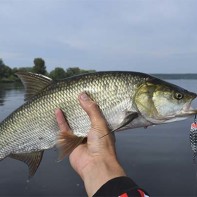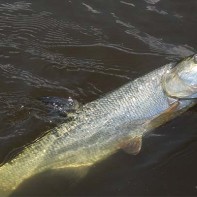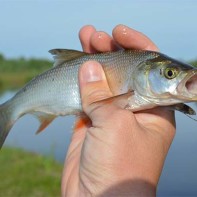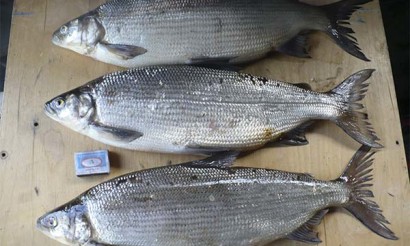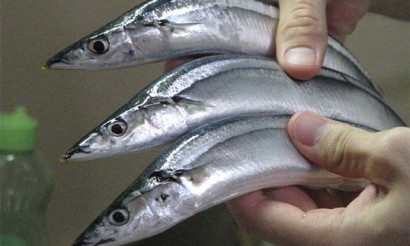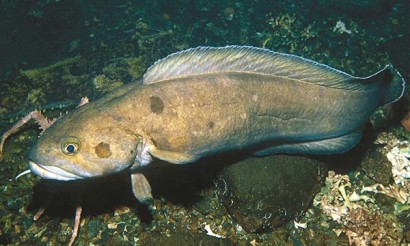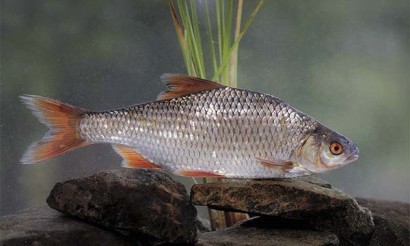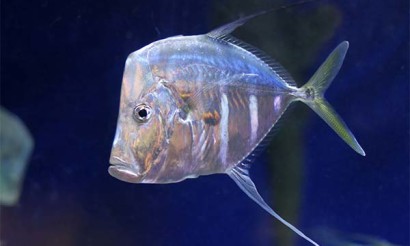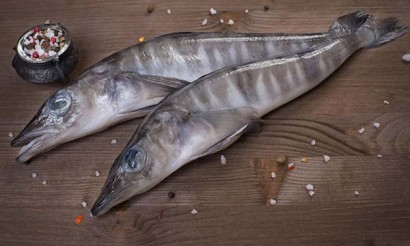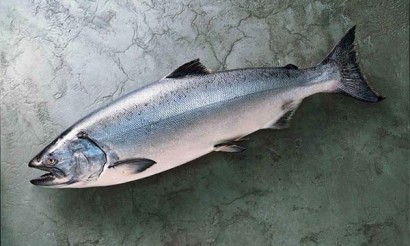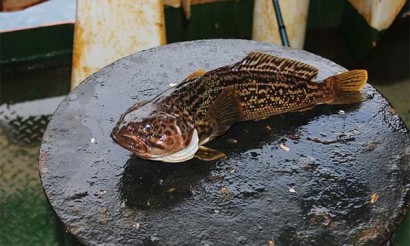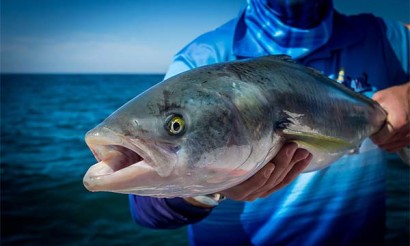The fish of the roach: photo, description, useful properties and recipes
A secondary object of fishing and a coveted trophy of amateur anglers - a typical freshwater predator that does not make long migrations. The first and second courses are made of roach, but the fish is especially tasty dried and smoked. Its tender, fatty meat quickly replenishes wasted energy, supports the work of the nervous, cardiovascular system.
- Zherekh: what kind of fish it is, what it looks like and where it is found
- What does it look like?
- Where does it live
- What does it eat?
- Natural enemies
- Lifespan and spawning
- Variety
- Species population and status
- Breeding and rearing
- Other names of roach
- How pike differs from chub and ide
- How to catch pike: when, where and on what?
- When to catch
- Where to catch
- What to catch
- Composition and calories
- How the meat of roach is useful for the human body
- Useful caviar of roach
- How useful is it
- How much costs
- How to salt
- Hazards and contraindications
- Where to buy and how much costs
- How to cook fish of roach: Recipes
- In the oven
- In the pan
- How to make a fillet of roach
- Cutlets of roach: Recipe
- How to cook fish soup
- Q&A
- What does roach taste like?
- Fat or not?
- Are there many bones in the fish?
The roach: what kind of fish is it, what does it look like and where does it live?
Aggressive but very cautious aspius (Aspius aspius) of the genus Zherekhi of the Carp family rapidly gains weight and grows to 0.6-0.8 m on average and weighs 1.5-2 kg at maturity. The maximum length of the caught fish is 1.2 m with a body weight of 12 kg.
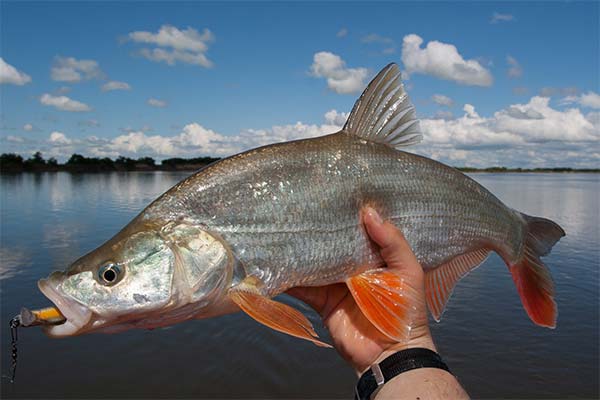
Predators in large and medium-sized rivers and large reservoirs spend most of their lives alone in the water column. They join into groups during spawning migrations, to hunt when food is plentiful and during hibernation. Representatives of carp species avoid reservoirs with standing water because of lack of oxygen, although fish successfully grow artificially in ponds and pools.
What it looks like
The roach has an accelerated metabolism and rapid growth. This is due to a special digestive system. The fish has no stomach, the food goes directly into the intestines and is quickly digested.
Description of the appearance of a representative of the carp family:
- The progony body is covered with thick scales.
- Abdomen white, flanks silvery, dorsum grayish-blue.
- Tail forked, lower part slightly longer than upper one.
- The fins are dorsal and caudal gray, the rest are reddish with a grayish border.
- The head is elongated with a protruding lower jaw.
- The eye iris is yellow with a green spot on top.
The roach has fleshy lips and the teeth are not on the jaws but in the throat.
Where does it live
The area of the roach is limited to the territories of Central Europe, washed by the waters of the Northern, Baltic Sea.
In Russia, the predator is distributed in the rivers of the basins of the Azov, Black Sea and the northern part of the Caspian Sea (the Volga, Ural, and Terek rivers). The fish is found in the Neva, the Northern Dvina, the Svir River connecting Ladoga and Onega Lakes. It is occasionally caught in the Balkhash Island. Balkhash.
The Aral Sea is inhabited by the Aral subspecies and the Tigris River is inhabited by the Foreasian subspecies.
A large active predator requires a lot of living space with a rich food base and oxygen-enriched water. It withers in isolated, polluted bodies of water, does not live in small streams and cannot tolerate salt water. Suitable habitat for fish - large flat rivers, reservoirs, less often - large lakes.
What does it eat?
The diet of young fish includes worms, small crustaceans, insects. Fish grown to 30-40 cm, continue to eat dragonflies, butterflies, beetles and worms, but the main food are smaller fish and their fry.
The favorite food of adults is bleak, tulka, gudgeon, gustard, chub, bream fry, and wobble. Mature specimens often hunt large fish although they may swallow a victim up to 15 cm in length.
During the roast, the asp asp makes a lightning rush into a school of young fish and smothers them with his tail. Then several times in a row jumps out of the water and falls on the flock, creating a lot of noise, splashing. These maneuvers are called fighting.
When juvenile fish roll into the delta in droves from upstream rivers, predators join together in groups to hunt.
Natural Enemies
Thanks to its excellent vision, the roach controls what is going on around it and does not let predators and fishermen close without camouflage. The only enemies are birds attacking from the air. Mature specimens die in the clutches of ospreys or white-tailed eagles that dive from a height.
Young are eaten by predatory fish, cormorants, gulls, and other waterfowl.
Life span and spawning
The spawning migration of 3-4 year old aspirations starts together with the flood at the end of March and lasts until the first days of May, when the water gets warm up to 6-10°C. Females hatch at a time 6-150 thousand sticky, bright yellow eggs with a diameter of 1.5-2.5 mm. Spawning sites are located in rivers with fast currents and in rocky or vegetated areas. The number of eggs depends on the age and size of the females. The larger they are, the more offspring they are able to reproduce.
Larvae 6-9 mm long hatch after a week and a half or two weeks. After the nutrient reserves in the yolk sac run out, the fry begin to feed on zooplankton. By the end of the first year, when they grow to 8-10 cm, fry of other fish species are included in the diet.
On average, roach live 7-10 years. Maximum life span - 15 years.
Varieties of .
In addition to the common (European) species, ichthyologists distinguish 3 more varieties:
Flathead Amur.
Pseudaspius leptocephalus has an elongated, laterally compressed body covered with fine scales. Its maximum body length is 0.8 m and its weight is 2-4 kg. The head of the flathead pike is flattened and wedge-shaped. The sides are painted silver. The back of the fish is gray with a greenish cast, the belly is white, and the pelvic and anal fins are pink.
It lives in the basins of the rivers Onon, Shilka, Argun, Ingoda, Sungari, Ussuri, and in Lake Khanka.
Aral
Large representatives of the species, reaching a length of 85 cm and a weight of 6 kg, live in the rivers Syr Darya, Amu Darya, Zarafshan and Kashkadarya. Previously, the species was common in the Sea of Azov, but disappeared due to the anthropogenic-natural ecological disaster, which resulted in the loss of 90% of the water volume.
The body of the Aral roach is runny. The belly has a keel located between the pelvic and anal fins.
Trans-Asian .
Occurs exclusively in the Tigris River, which runs along the Syrian border and through Iraq. The Trans-Asian roach is smaller than the average roach. The fish mostly grows to 55 cm at a weight of 1.6 kg.
Population and Status of the Species
Despite its secondary commercial importance and small commercial fishery, the population is declining annually.
Causes:
- Death of immature juveniles due to poaching activities;
- Thermal pollution, deforestation of coastal forests, shipping;
- chemical pollution by industrial wastes;
- irrational management of the fishery;
- changes in climatic conditions.
The roach is listed in the IUCN Red List and has been in the Red Book of Karelia since 1995. At present due to the reduction of the population the roach is artificially bred in fishing farms.
Breeding and rearing
In a pond or a swimming pool they arrange fine-meshed 6 x 4 m cages where juvenile fish of one year are brought. Per 1 sq. m. of living space there are 200 fry.
As a result of intensive fattening, fisheries in a season receive from one cage up to five tons of fish suitable for sale.
The necessary conditions for the artificial rearing of asp are protein quality food, aeration of the pond, illumination and water filtration.
A part of the pond or pool is allocated for broodstock. Fertilized eggs are selected artificially, and later the young fish are sold to other farms.
Other names of roach
Because of the peculiarities of appearance and lifestyle, the roach has received several other names:
- The fish is called "horse" because of its specific hunting style. It jumps out of the water and collapses with its entire mass on the chosen victim.
- The name grip, meaning dexterous, agile, appeared due to the fact that during the stunned one fish others freeze from surprise and fall into the mouth of the predator.
- For the same reason, representatives of carp called sheressper (perky).
- For its voracious habits, the predator was named whiting, and for its love of the fast stream - the river corsair.
In the local dialects, the roach sounds like cherich, sherich, sheressper.
How the roach differs from the chub and ide
All three species belong to the carp family, so they are easily confused. Upon closer examination, the differences become apparent.
The main feature of the asp is its mouth, the structure of its jaws. On the lower one there is a knoll that goes into the notch of the upper one and forms a kind of lock that holds the prey in a "dead grip". Unlike chub and roach, roach's lower jaw is longer and the upper part of the forked tail is shorter than the lower one.
Distinctive features of the ide:
- Short, thickened body;
- large scales;
- color changing in sunlight from silvery to golden;
- greenish-yellow iris eyes with a dark spot in the upper part.
Characteristic features of the chub:
- wide, blunt head;
- large eyes;
- black scales at the base.
Differences in behavior are also noticeable. The roach is much more active than the ide and the chub, which explains the different ways of fishing.
How to catch roach: when, where and on what?
The predator feeds throughout the daylight hours. In contrast to the pike he does not sit in an ambush, and actively stalks prey. Catch roach by spinning, float tackle and fly fishing.
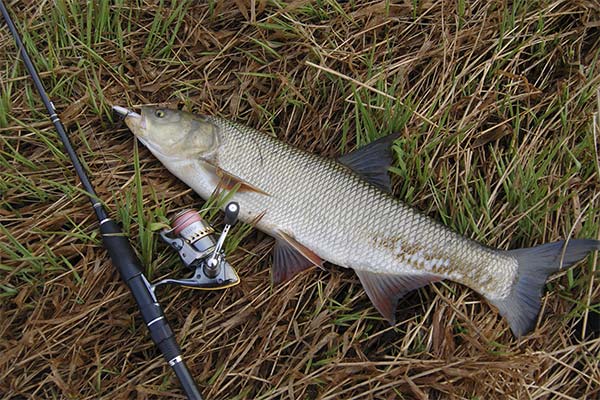
When to catch
Daytime predator goes out to hunt in the morning dawn. The best time to fish is from dawn to 10 o'clock and in the evening from 6 p.m. to darkness. At dusk the probability of catching a trophy increases. At night the roach goes to the depths and does not show any activity until morning.
It's better to catch fish in clear warm weather at a temperature of 20-25 ° C. In light wind or rain it may stay closer to the bottom.
Fattening of the mass occurs immediately after spawning and lasts until mid-July. During this period, baiting occurs throughout the day.
Where to fish
The most promising throws on the "splash". If you manage to find a feeding spot of roach, you can return to this area again. Predator distinguishes constancy. He hunts at the same time and in the same places with a small margin of error. The predator does not make long migrations in search of food.
Its favorite feeding places are:
- estuaries, narrows, stony rapids of rivers;
- swamps, splashes;
- exits from pits;
- areas near sluices, dams, bridges.
The sherespear likes strong currents, because behind the turbulent water it becomes invisible to prey.
Small specimens are caught on the rifts, large - in wide deep streams with a rocky bottom. For fish it is important to have shelters - stones, snags, shadows from hanging tree crowns.
What to fish with
The choice of spinning depends on the place of fishing, the size of baits and the weight of the intended prey. When throwing from a boat, blanks with a length of 2.4 m are used, from the shore - 2.7 m. For fishing in the current need stiff rods with often located wide rings, which properly distribute and withstand the increased load.
Spinning is equipped with a solid multiplier reel and cord with a diameter of 0,12-0,16 mm. Of the baits choose spinners, oscillators weighing 8-14 grams, pelkers, surface wobblers, wobblers, twisters, fish from foam rubber no longer than 7 cm in length.
When using fly fishing tackle and float rod, roach is caught on streamers (artificial flies that imitate insects), worms, crayfish meat, live insects (flies, grasshoppers, locusts, dragonflies).
Composition and calories
Sherever is rich in easily digestible proteins, calciferol, cobalamin, phosphorus, selenium, zinc.
The composition of sherespur includes:
- vitamins - D, group B, C, PP, A, beta carotene, tocopherol;
- macronutrients - phosphorus, sulfur, potassium, magnesium, sodium, calcium;
- trace elements - selenium, zinc, copper, iron, manganese;
- Saturated and unsaturated Omega-3, 6 fatty acids.
GI of 100 g of the edible part of sherespur - 18.8, 2.6, 0 g, respectively. The energetic value is 99 kcal.
How is the meat of the aspirin useful for the human body?
A one-hundred-gram portion of the product contains two daily doses of vitamin D, which regulates calcium-phosphorus metabolism and participates in cell renewal.

Other health benefits of roach:
- Speeds up the immune response, protects the body from seasonal colds.
- Improves blood flow.
- Improves the metabolism of phospholipids in the liver.
- Prevents deposition of fat.
- Strengthens blood vessels.
- Prevents tachycardia, arrhythmia and hypertension.
- Neutralizes toxic substances.
- Synthesizes hemoglobin, a number of hormones.
- Participates in hematopoiesis.
- Increases cognitive ability of the brain.
- Prevents anemia, leukopenia, rickets, osteoporosis, liver cirrhosis, sexual dysfunction in men, fetal abnormalities in pregnant women.
- Mineralizes bone tissue, tooth enamel.
- Regulates the thyroid hormones.
- Reduces the period of rehabilitation after surgery, injury or illness.
Dietary roach meat is included in the menu for weight loss, diseases of the joints, to increase stress resistance.
Is roe of roach useful?
Tender with a pleasant taste bright yellow caviar contains nutrients in a concentrated form. The product is consumed as part of appetizers and as a separate dish served with bread.
The delicacy has a number of positive properties, but because of its high salt content, nutritionists recommend eating it in limited quantities.
What is useful
Caviar supports the heart, blood vessels, improves digestion, accelerates metabolism, strengthens bones, makes elastic joints. Antioxidants in the composition (vitamins A, E, C, PP, K, B6, selenium) eliminate the effects of destructive oxidative reactions, prevent cancer, arthritis, asthma, atherosclerosis, cataracts.
Omega-3 fatty acids strengthen the immune system, improve blood clotting, strengthen blood vessels, protect them from cholesterol that forms plaques.
When included in the diet caviar relieves inflammation and pain in arthritis, arthrosis, normalizes blood pressure, improves the condition of the bronchi, neutralizes carcinogens.
How much does it cost?
Salted caviar is sold in online stores at 1000 rubles per 1 kg, 500 g of dried in canned tube in a vacuum pack costs 900 rubles.
How to salt
Long-term storage caviar is salted by the method of triple pouring.
How to prepare:
- Make a boiling brine at the rate of 100 g of salt per 1 liter of water.
- Cut the film of crusts, pour the salt solution. Stir with a fork for three minutes, drain the liquid.
- Pour the product a second time. Stir by winding the film on a fork. Rake the caviar on a sieve. Remove small lumps of the remaining film.
- Return the caviar in a bowl, pour there a third of the boiling brine. When stirring the liquid should remain clear. After a couple of minutes, put the caviar on a sieve, wait for the brine to drain.
- Prepare small glass jars.
- Pour 1-2 tbsp. vegetable oil at the bottom of the container, fill the delicacy for 2/3 of the volume, sprinkle a spoonful of salt, mix. Add more caviar, pour oil so that it was 0.5 cm above the surface.
Snack is ready to eat in 2 hours, but it is better to keep it in the refrigerator overnight and serve for breakfast with a fresh loaf, butter and sweet aromatic tea.
Harm and contraindications
The meat of roach is contraindicated to people with individual intolerance to the product, allergic reactions to it.
There is a possibility of infection with helminths if the fish is bought from hand and has not passed sanitary control.
Caviar should be refrained from with kidney problems, susceptibility to edema, hypertension.
Where to buy and how much it costs
Jacks are purchased in large chain or specialty stores, wholesalers, markets, fairs and online venues.
A kilogram of live roach can be bought in a fish store, as well as chilled at the market for 340-400 rubles. A little cheaper product is sold in supermarkets (320-390 rubles). The bazaars sell the fish for no more than 170 rubles.
Dried roach costs 1300-1400 р, hot-smoked - 900-950 р, cold-smoked - 800-1400 р per 1 kg.
How to cook roach deliciously: Recipes
Jerch is baked in the oven and multicooker, pan-fried, grilled, smoked, dried, salted. Fish is used for soup, soup, stew with mushrooms, apples, in tomato or white sauce, as well as for appetizers and stuffing.

It can be combined with herbs, lemon, olives, garlic, pepper, sour cream, cheese, milk and white wine. The tastiest balsak served with beer.
In the oven
To roast a whole roach weighing 0.7-1 kg, you will need:
- a glass of sour cream;
- two onions;
- lemon;
- one tablespoon of salt, one teaspoon of ground black pepper.
Stages of preparation:
- Prepare the carcass. Clean, gut, rinse and dry.
- Preheat the oven to 200°C.
- Cover a baking tray with a sheet of foil. On it place the roach, rubbed on all sides with a mixture of salt and pepper.
- Brush the inside and outside with sour cream.
- Cut peeled onions in large rings and slice lemon. Put the ingredients in the belly.
- Wrap the fish in foil in an envelope.
- Bake for half an hour. Open the foil, continue cooking for 10 minutes more, lowering the temperature.
Baked dish is combined with boiled rice, potatoes, vegetable salad, stew, canned peas, pickled onions.
On the pan
Fried roasted roach cooks quickly, turns out crispy on the outside and juicy on the inside.
Ingredients:
- 1 kg of fish;
- half a lemon;
- salt, spices;
- refined oil for frying.
Preparation:
- Clean, gut the carcass. Cut off head and tail. Rinse under running water, dry.
- Cut the sides crosswise with a knife. Cut into portions.
- Rub with salt, spices for fish. Drizzle with lemon juice.
- Put on frying pan heated with oil and fry till it is ready.
Serve with buckwheat, rice, beans, pickled mushrooms, vegetables.
How to make a fillet of roach
The most delicious balik is obtained from fresh fish weighing 1-3 kg.
How to prepare:
- Cut the roach in layers. With a strong knife, cut along the body from the back to the belly, taking care not to damage it.
- Remove the gills and insides, cut out the backbone by detaching it with a knife from the rib bones. Rinse the fish, dry it.
- Sprinkle both sides of the salt, put in a bowl or pot.
- Press the layer with a weight.
- After 8-12 hours wash the fillets, soak in cold water for 2-3 hours.
- Dry the flattened carcass. When the water drains out, put in the stomach dill greens, garlic. Cover one half of the plate with the other half, wrap in parchment, send for 24 hours in the refrigerator.
- In the evening, hang the roach on the balcony or in another ventilated room, inserting wooden spacers into the flesh.
- In the morning, return the char to the refrigerator. In the afternoon, take the carcass out into the sunlight for an hour to let the fat come out on the surface.
Tip! In the summer heat make balik more salty. To do this, reduce the soaking time after salting.
Cutlets of roach: recipe
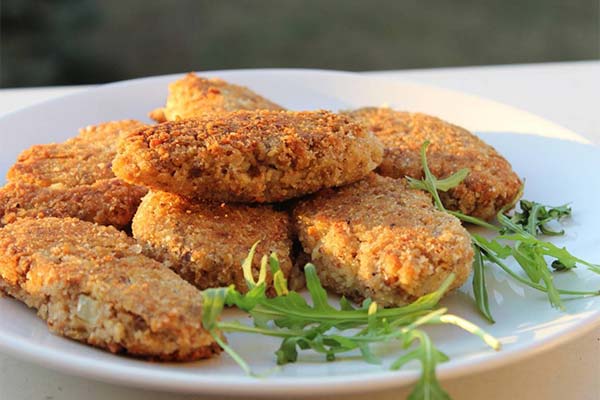
To fry fish cutlets, prepare a set of products:
- 1.5 kg of roach;
- 2 eggs;
- 150 g of white loaf crumb;
- 200 ml of milk;
- 100 g of wheat flour;
- 100 g of onions;
- pepper, salt;
- oil for frying.
Method of preparation:
- Cut the fish into fillets. Remove small bones with tweezers.
- Soak the loaf in milk for a quarter of an hour.
- Peel the onions and cut into slices.
- Mince the fillet and onion through the meat grinder twice.
- Mix eggs, salt, pepper and knead well.
- Form cutlets with wet hands.
- Roll in flour, place in a heated frying pan with oil.
- Fry for 5-7 minutes on both sides.
Place the cutlets on paper towels to remove excess fat. Serve with crumbled rice or mashed potatoes, vegetable salad.
How to Make Fish Soup
To cook 4 servings of hearty, filling soup, you will need:
- 1 kg of roach;
- 100 grams of rice;
- 2 tomatoes;
- 1 onion, carrot;
- 50 g celery;
- 2 bay leaves;
- 2 cloves of garlic;
- 1 l of water;
- salt, pepper, herbs.
How to boil:
- Clean the fish in a bowl of water. Flatten the belly, remove the insides, remove the gills and cut off the tail. Rinse thoroughly, cut into portions, and place in a saucepan.
- Peel vegetables, coarsely chop. Crush garlic cloves with a knife, turning it flat. Add all ingredients you have prepared to the fish. Add bay leaf, peppers, and black pepper.
- Fill with water, bring to a boil. Take off the foam, salt, reduce the heat to medium, and simmer for 20 minutes.
- Rinse the rice, pour it into the broth.
- After a quarter of an hour, add chopped parsley, dill greens. After 5 minutes, remove the pot from the stove. Allow the soup to stand for 10 minutes.
When serving, put a piece of fish in each plate, add vegetables and rice, and pour the broth over it.
Q&A
Fans of fish dishes are interested in the gastronomic qualities of the product and whether there are many bones in the carcass.
What does roach taste like?
The meat of the predator is tender, smells a little like sludge. Salted, dried and smoked roach tastes better. Balik is just as good as salmon.
Fatty or not?
Consumers describe the meat as fatty, although 100 g of the product contains only 2.6 g of fat, most of which is represented by unsaturated fatty acids.
Are there many bones in the fish?
There are a lot of bones in the asp. To soften them, you have to stew the fish for a long time, smoke it, make oblique cuts on the carcass before frying or cook cutlets.
Many tasty and nutritious dishes can be prepared from the purchased or caught on the fishing roach. Tender juicy meat and delicious caviar without fishy odor not only diversify the everyday diet, but also maintain physical health, keep away from depression, increase stress resistance.
«Important: All information on this site is provided solely for introductory purposes. Consult with a health care professional before using any recommendations. specialist. Neither the editors nor the authors shall be liable for any possible harm caused by materials."

